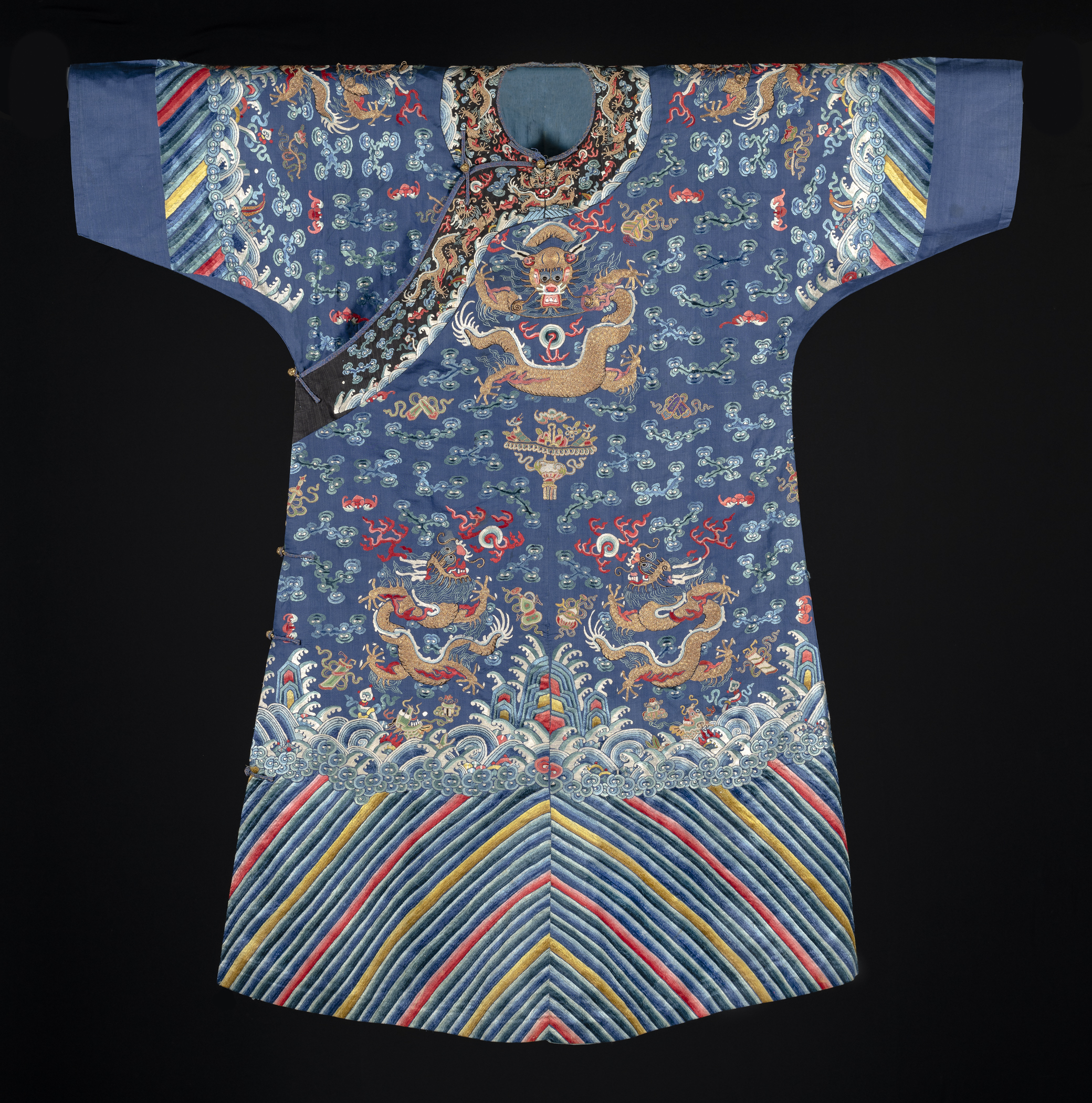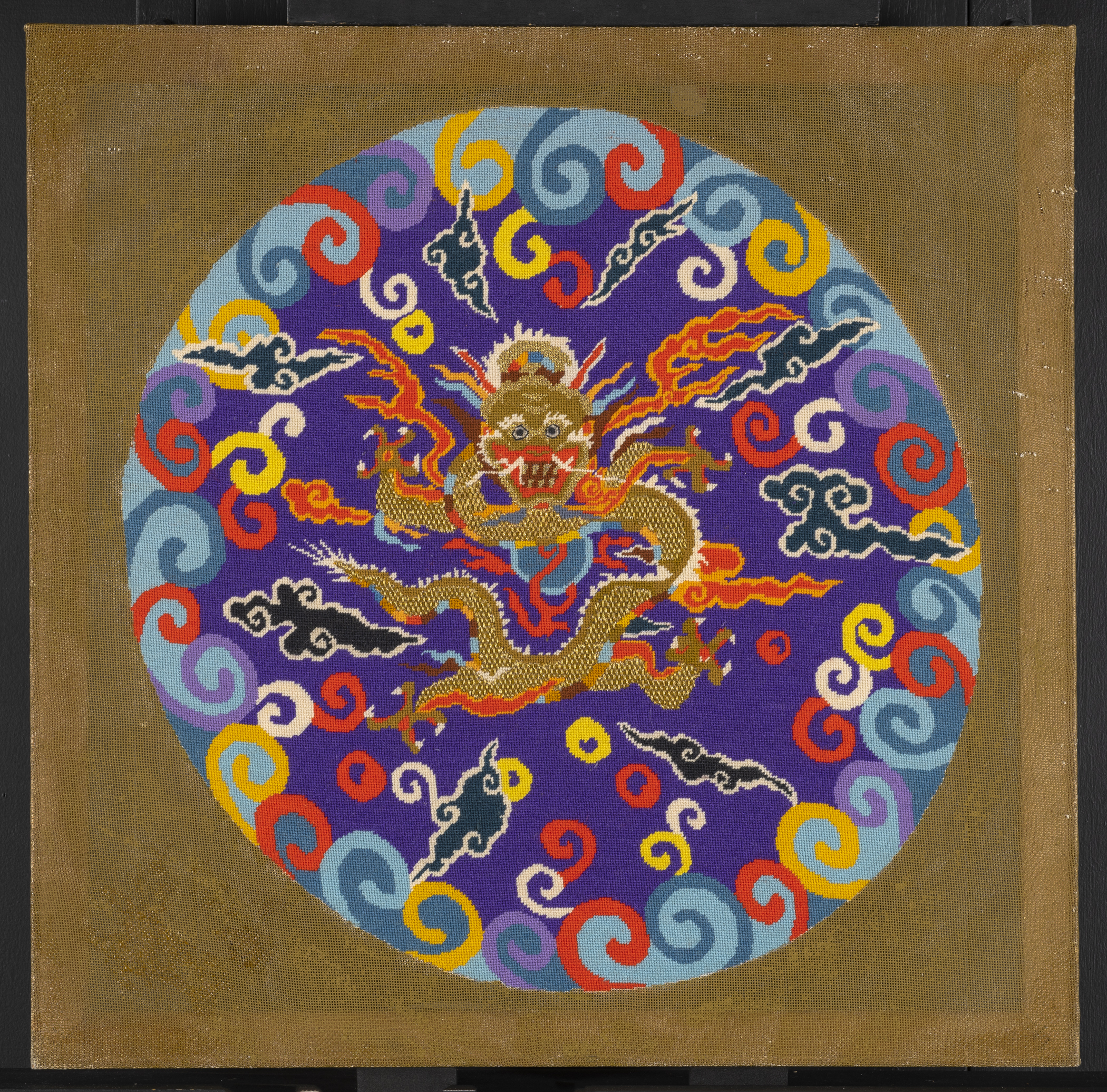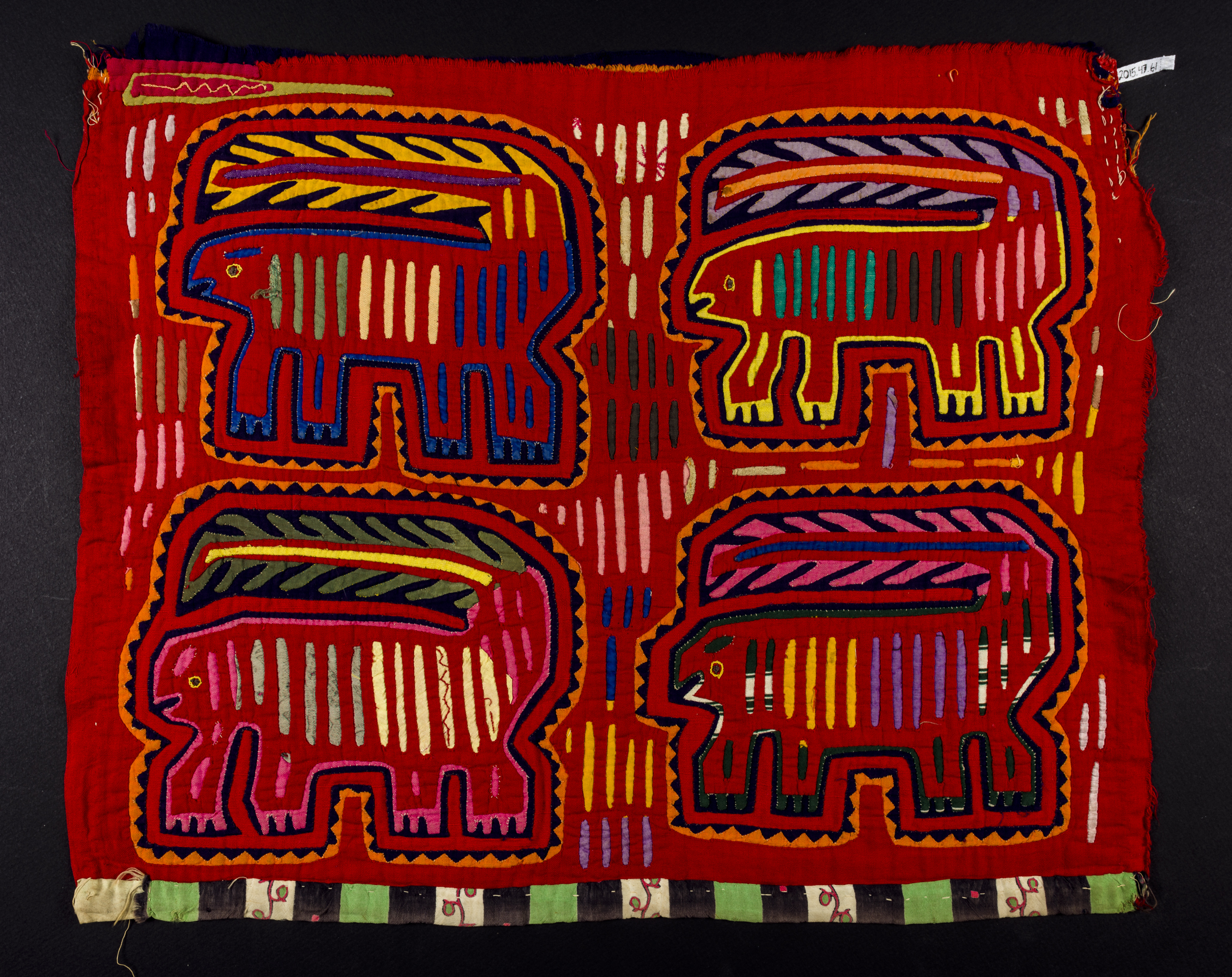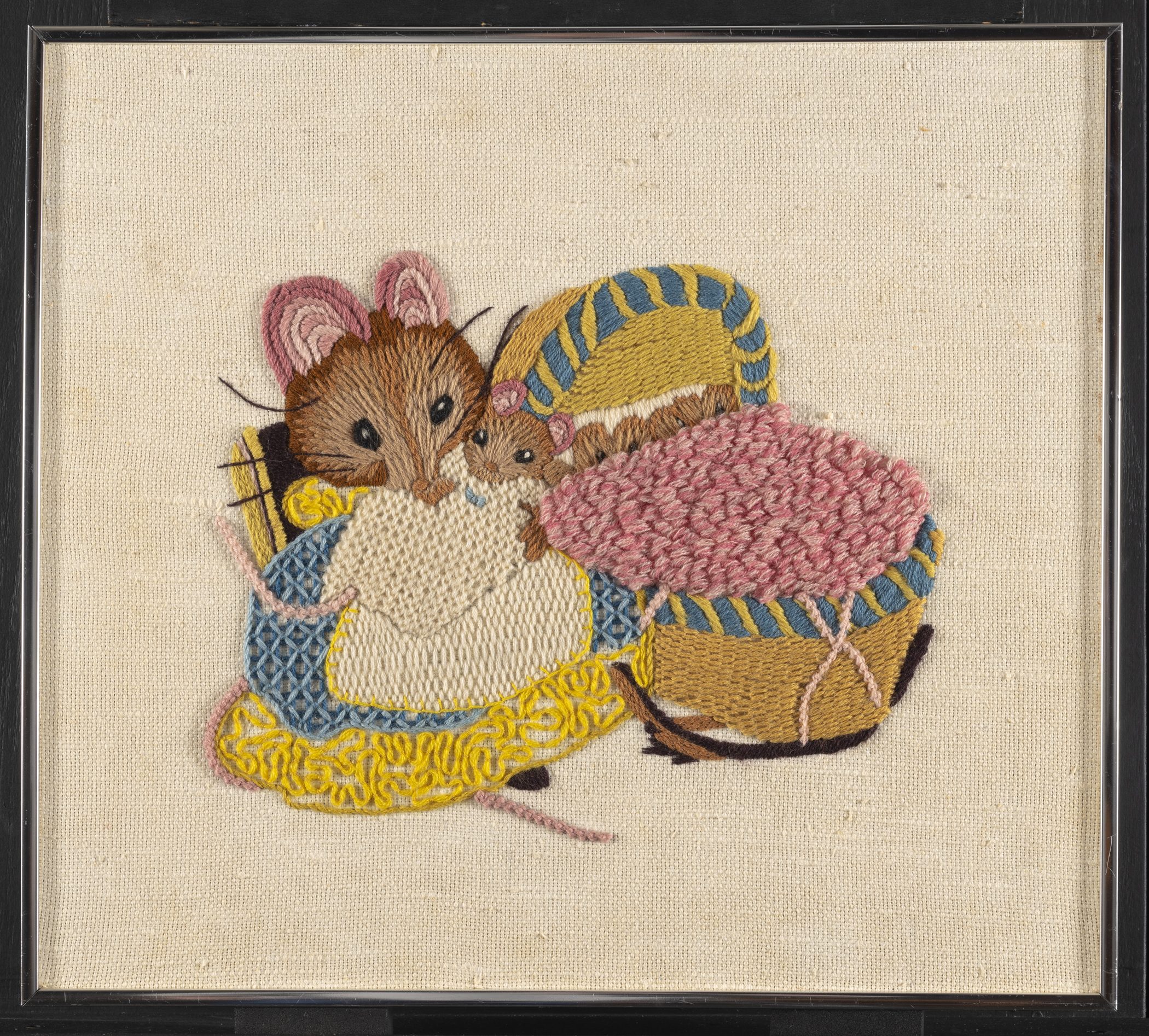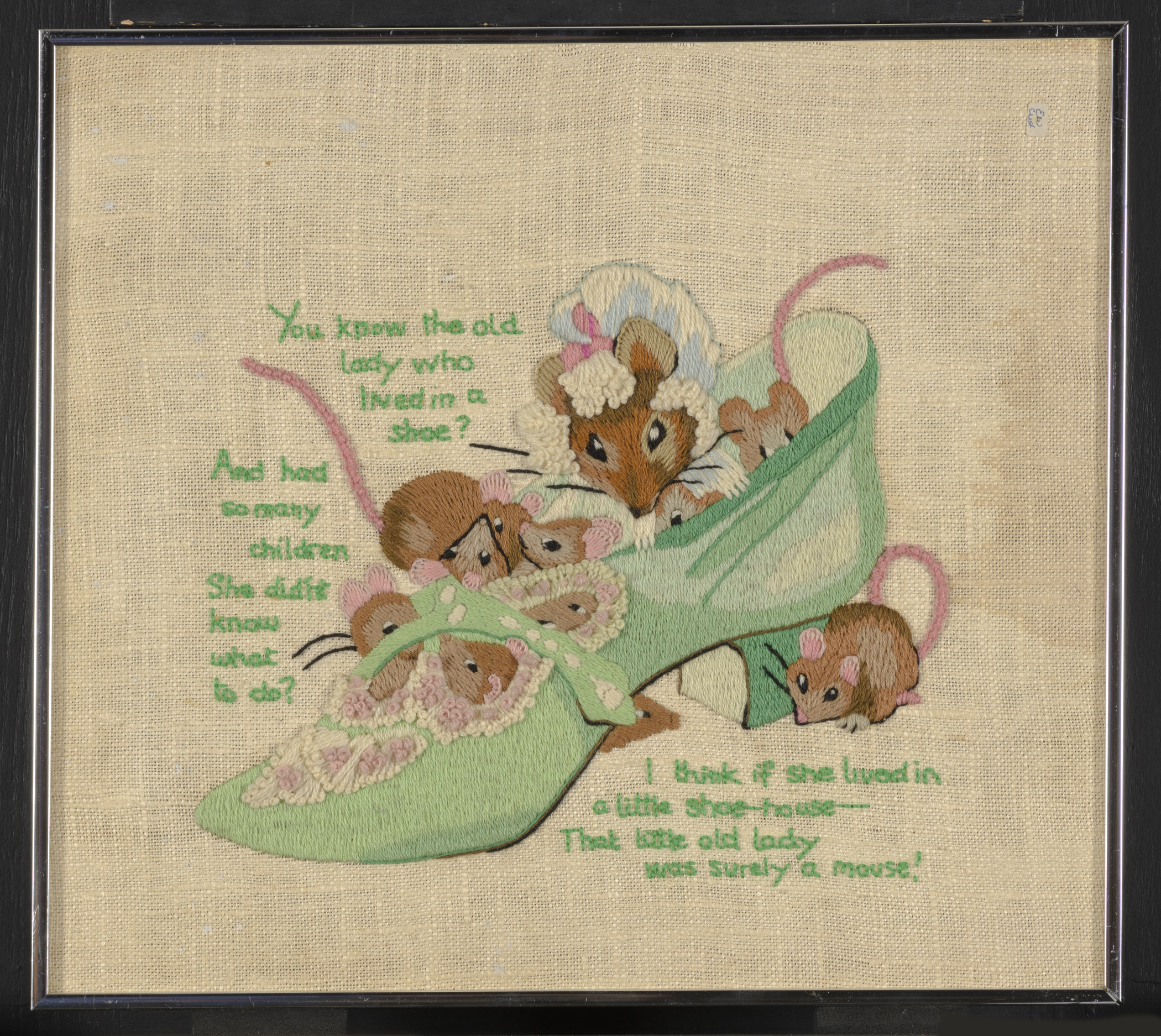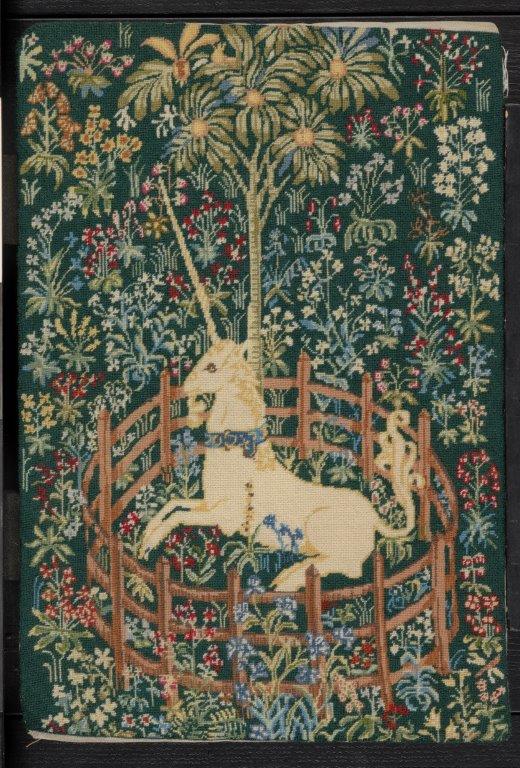At the Royal School of Needlework, Erica was encouraged to use museum collections as inspirations for her designs, a practice she continued throughout her career. She was also inspired by the beautiful textiles she saw, and sometimes bought, on her travels.
She also created a number of popular designs based on children’s books. Her book, Children’s World: Needlework Ideas from Childhood Classics, published in 1983, included designs based on characters from Beatrix Potter stories, The Muppets, Babar, Winnie the Pooh, and The Wind in the Willows.
In this image, Erica is wearing her great-grandmother’s 1860s bodice and skirt; here she wears the bodice with only one arm inserted because it was so small. She wore the skirt on her television show when she explained the technique of padded satin stitch in December 1971, explaining that her great-grandmother had an 18-inch waist and that she had to “let it out somewhat considerably.”
Erica featured a line drawing by Vladi of her great-grandmother’s skirt and bodice in Erica Wilson’s Embroidery Book. Erica believed that her great-grandmother bought this ensemble at an exhibition in Paris in 1851, but the style of the dress dates it to the 1860s.
Photo courtesy of the Family of Erica Wilson; Gift of the Family of Erica Wilson 2015.0047.065 A-B; drawing from Erica Wilson, Erica Wilson’s Embroidery Book (New York: Charles Scribner’s Sons, 1973), p 181.
The exquisite embroidery on this Chinese dragon robe inspired Erica to adapt part of the design in needlepoint, a much simpler technique than couching gold thread. In her Erica television episode “Oriental Gold,” she showed the symbolism and execution of Chinese embroidery on royal garments and then demonstrated some of those techniques.
Gift of the Family of Erica Wilson 2015.0047.056 and 2015.0047.010
Erica was fascinated by embroidery techniques she saw on her travels, including this red reverse applique Mola from the San Blas Islands, now part of the Guna Yala district. She featured it on her show first aired on February 15, 1972. The placemat on the right uses layers of felt to evoke the look of the technique.
Gift of the Family of Erica Wilson 2015.0047.061 and 2015.0047.045
Erica adapted many different kinds of techniques in her black work designs. In Erica Wilson’s Embroidery Book, she pictured an original work of Swiss Scherenschnitte, a technique of paper cutting to produce detailed silhouettes that likely inspired this piece.
Courtesy of the Family of Erica Wilson
Erica featured this gold work pomegranate tree design on a handbag in her first catalog in 1965. In this design, she paired traditional English gold work with a stylized and updated composition of pomegranates, a favorite embroidery motif.
Gift of the family of Erica Wilson 2015.0047.009
Hunca Munca, illustrated here, was adapted from an illustration in Potter’s The Tale of Two Bad Mice, a beloved children’s story that follows two mice, Tom Thumb and Hunca Munca, as they explore a red-brick dollhouse. This image, stitched in crewelwork, shows Hunca Munca laying her baby in a cradle that she pilfered from the dollhouse. Erica featured this same design in crewelpoint in an episode on that technique that aired January 25, 1972.
Gift of the Family of Erica Wilson 2015.0047.021
This embroidered picture renders in crewelwork Beatrix Potter’s version of a Mother Goose tale, “The Old Woman Who Lived in a Shoe.” It demonstrates Erica’s talent for illustration in embroidery, using multiple shades of wool to create realistic dimensionality.
Courtesy of the Family of Erica Wilson
Edward Lear’s famous poem “The Owl and the Pussy-cat” was published in 1871 in his book Nonsense Songs, Stories, Botany, and Alphabets. Erica’s rendition features two adorable animals sailing away in a “beautiful pea-green boat.” It shows her gift for adapting beloved stories and poems in contemporary colors and imaginatively scaled compositions.
Gift of the Family of Erica Wilson 2015.0047.027
A sleeping kitten named Chessie was the logo of the Chesapeake and Ohio railroad, and one of Erica’s most popular kits, first issued in 1976 and later reissued in other embroidery techniques. Her stitched depictions of animals were among her most popular and most successful.
Gift of the family of Erica Wilson 2015.0047.019
In the mid-1980s, Erica partnered with The Metropolitan Museum of Art on a line of kits and a book inspired by works in the museum’s collection. She adapted this elaborate needlepoint design from The Unicorn Rests in a Garden, one of the “Unicorn Tapestries” donated to The Cloisters, part of the museum, by John D. Rockefeller, Jr. in 1937.
Courtesy of the Family of Erica Wilson






